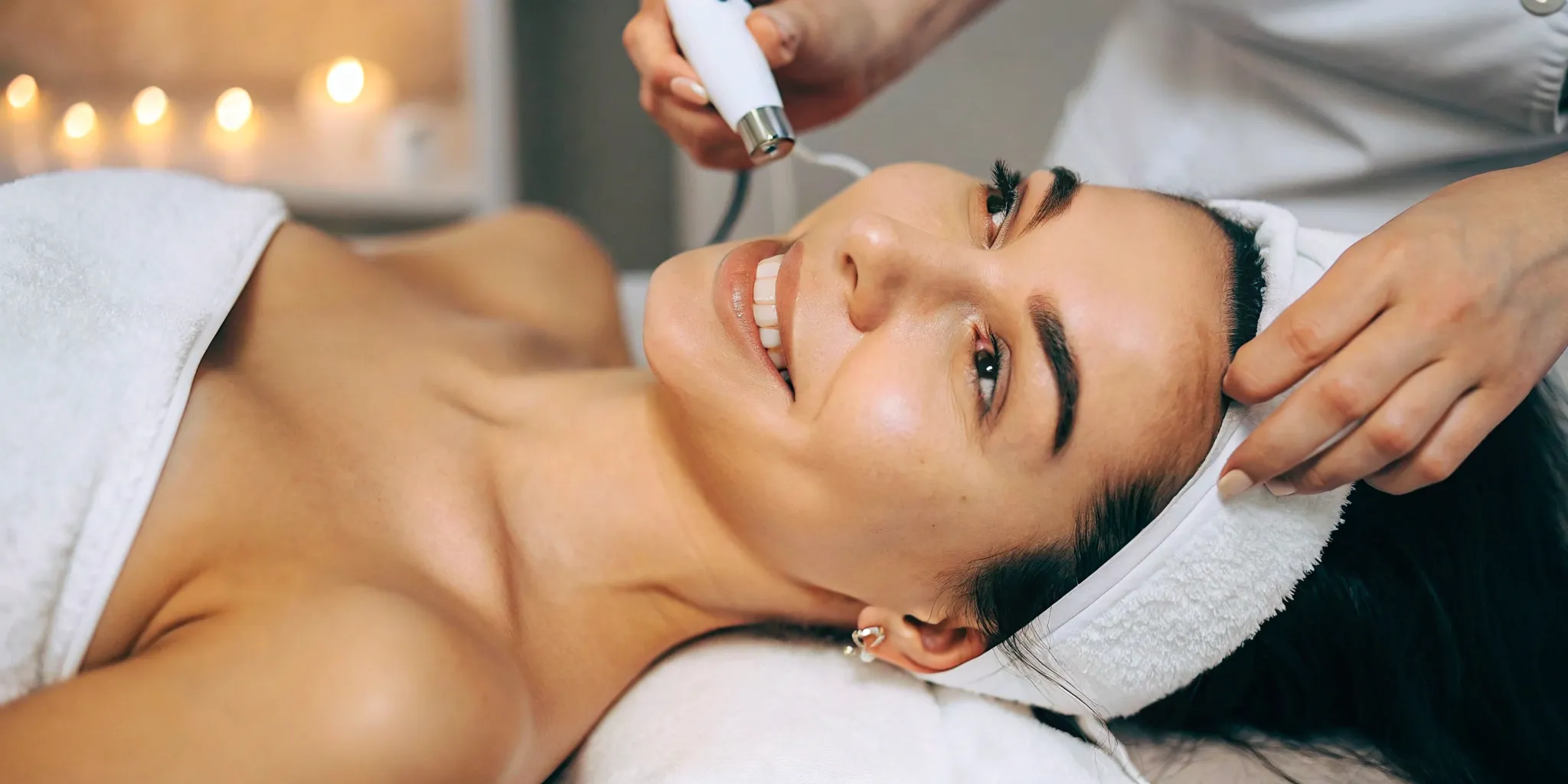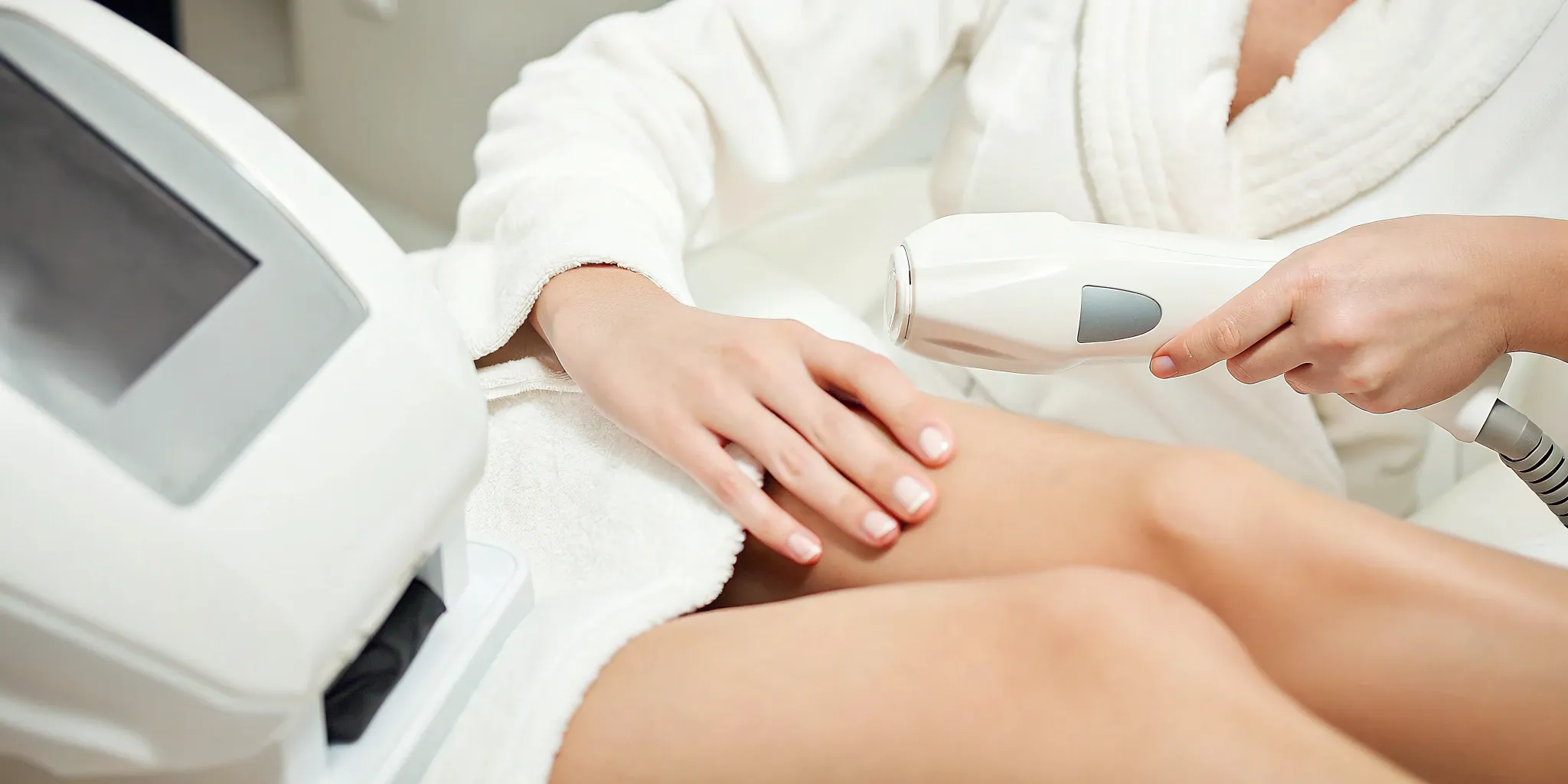That tattoo you got years ago might not feel like you anymore. Tastes change, lives evolve, and what once felt like a permanent statement can start to feel like a story from a past chapter. If you’re ready to turn the page, you’re not alone. The decision to remove a tattoo is a personal one, and it’s a path many people take to feel more at home in their own skin. Modern tattoo removal in Texas makes it possible to get a clean slate safely and effectively. This guide will walk you through the entire process, from the science behind it to finding the right expert.
Key Takeaways
- Removal is a team effort: Advanced lasers shatter the tattoo ink into tiny particles, but your body’s immune system is what actually clears the ink away. This is why the process is gradual and requires healing time between sessions.
- Your tattoo’s unique details shape the process: Factors like the ink colors, age, and size of your tattoo directly influence how many sessions you’ll need and what your final results will look like. A professional consultation is essential to get a realistic timeline and cost estimate.
- Choosing a qualified expert is critical for your safety: In Texas, laser tattoo removal is a medical procedure. Always select a clinic with medical supervision and certified technicians, and use your consultation to ask about their technology and review their past work.
How Does Tattoo Removal in Texas Actually Work?
If you’re thinking about parting ways with a tattoo, you’ve probably wondered what the process actually looks like. It’s not magic—it’s a fascinating blend of advanced physics and your body’s own natural healing abilities. Modern laser tattoo removal is a highly sophisticated procedure that targets ink without harming the surrounding skin. The goal is to break down the pigment and let your body do the rest of the work. It’s a gradual process that requires patience, but the results can be truly freeing. Let’s break down exactly how it works, from the science behind the laser to the factors that will shape your personal journey.
The Science of Fading Ink
Ever notice how tattoos naturally fade and blur over decades? Laser removal essentially speeds up that process in a very targeted way. When you get a tattoo, the ink particles are too large for your body’s immune system to clear away, so they stay put in the dermis layer of your skin. A specialized laser sends ultra-short pulses of light energy into the tattoo. This energy is absorbed by the ink particles, causing them to shatter into tiny fragments. Once the ink is broken down into these microscopic pieces, your body’s natural cleanup crew—the immune system—can finally flush them out. Each session breaks down more ink, causing the tattoo to fade from the inside out.
A Look at Today’s Removal Technology
The technology behind tattoo removal has come a long way. Gone are the days of harsh, skin-damaging treatments. Today’s leading medspas use advanced Q-switched or picosecond lasers, which are the gold standard for safety and effectiveness. These lasers are incredibly precise, delivering powerful energy that shatters ink particles while minimizing heat transfer to the surrounding skin. This reduces the risk of scarring and makes the process more comfortable. Different lasers are also designed to target specific ink colors, allowing technicians to create a customized treatment plan that effectively breaks down everything from stubborn blues and greens to simple black lines. This level of precision is key to achieving a clean slate.
What Influences Your Final Results?
Your tattoo removal journey is as unique as the ink itself. Several factors determine how many sessions you’ll need and what your final results will look like. The age of your tattoo matters—older ink has often started to fade and can be easier to remove. The colors used are also a major factor; black and dark blue inks absorb the laser light best and typically fade the fastest, while lighter colors like yellow and green can be more stubborn. Your skin type, the location of the tattoo, and the density of the ink all play a role, too. This is why a professional consultation is the essential first step to creating a realistic and effective treatment plan.
Breaking Down the Cost and Timeline in Texas
Thinking about tattoo removal means you’re probably wondering two things: how much will it cost, and how long will it take? The answer isn’t one-size-fits-all, as the process is unique to you, your tattoo, and your skin. Let’s walk through the key factors that shape your personal tattoo removal journey so you know exactly what to expect.
What’s the Average Cost?
In Texas, you can generally expect to pay between $200 and $500 per treatment session. Think of this as a ballpark figure, because the final price depends entirely on your specific tattoo. Factors like the tattoo’s size and the complexity of its colors play a huge role in determining the cost of each appointment. The best way to get an accurate price is to schedule a personalized consultation. During your visit, a specialist can assess your tattoo and give you a clear, upfront quote for your treatment plan.
What Determines the Price Tag?
Several key elements influence the total cost of your laser tattoo removal. Larger and more intricate tattoos naturally require more time and resources to treat. The ink itself is also a major factor—darker inks like black and blue are typically easier for the laser to target than lighter, more vibrant colors. Your skin type and the location of the tattoo on your body also affect the process. A professional will consider all these details to create a plan that’s both effective and safe for your skin.
How Many Sessions Will You Need?
Patience is a key part of the process. On average, most people need between five and 10 sessions to see the results they’re looking for. For some, it might be a few less, and for others with more complex tattoos, it could be more. The exact number of treatments depends on the same factors that affect cost: the tattoo’s age, size, color, and ink density. During your consultation, your provider will give you a realistic estimate of how many sessions you can expect to complete your removal.
How Long to Wait Between Appointments
Giving your skin time to heal is crucial for getting the best results. We recommend waiting about eight weeks between each tattoo removal session. This isn’t just an arbitrary number—this waiting period allows your skin to fully recover from the laser treatment. It also gives your body’s immune system enough time to do its job of flushing away the tiny ink particles that the laser has shattered. Following this schedule helps ensure your skin stays healthy and the removal process is as effective as possible for all our professional treatments.
How to Find the Right Tattoo Removal Expert in Texas
Choosing the right person to handle your tattoo removal is just as important as deciding to get the tattoo in the first place—maybe even more so. This isn’t just about getting great results; it’s about your health and safety. The right expert will use the correct technology for your skin and ink, create a realistic treatment plan, and support you through the entire process. You want a professional who is not only certified but also has a deep understanding of how different lasers interact with skin tones and ink colors.
Finding this person requires a little homework, but it’s completely worth it. You’ll be looking for a combination of solid credentials, transparent communication, and proven experience. Think of your initial consultation as an interview where you’re in charge. It’s your opportunity to ask direct questions and get a feel for the clinic’s environment and the technician’s approach. A great provider will be happy to answer all your questions and make you feel confident and comfortable before you even book your first session. Taking the time to find a true expert ensures your journey to clear skin is smooth, safe, and successful.
Credentials That Matter
When it comes to laser tattoo removal, not just anyone can operate the equipment. It’s a medical procedure that requires specific training and knowledge. In Texas, this is taken very seriously. The Texas Board of Nursing states that only technicians who are properly qualified and delegated by a medical provider can perform these services. This means you should look for a clinic that is overseen by a medical director and staffed by certified laser technicians or licensed medical professionals. Don’t hesitate to ask about their specific certifications and how much experience they have with laser tattoo removal. A reputable clinic will be proud to share their team’s qualifications with you.
Smart Questions to Ask at Your Consultation
Your consultation is the perfect time to gather all the information you need to make an informed decision. Walking in with a list of questions will help you cover all your bases and compare different providers. Start with the technology. Ask what type of laser they use and why it’s the best choice for your specific tattoo colors and skin type.
Then, get into the specifics of your treatment plan. Inquire about the estimated number of treatments you’ll need and what the healing process looks like between sessions. It’s also a great idea to ask to see before-and-after photos of previous clients with similar tattoos. This gives you a realistic idea of the results they can achieve.
Where to Find Top-Tier Care in Texas
Finding a clinic you trust is key. You want a place that combines medical expertise with excellent customer care. Here in Texas, you have some fantastic options to consider.
Why We’re a Top Choice: Ultimate Image MedSpa
At Ultimate Image MedSpa, we focus on providing a completely personalized experience. We know that every tattoo and every client is unique, which is why we start with a thorough consultation to create a custom treatment plan just for you. Our team uses advanced laser technology to ensure safe and effective removal for a wide range of ink colors and skin tones. We are committed to helping you achieve your goals and provide dedicated support from your first visit to your final result. You can contact us to schedule a consultation and see if we’re the right fit for you.
Other Trusted Clinics in the State
It’s always a good idea to know your options. Across Texas, there are other highly-regarded clinics known for their quality care. Dermatology Specialists of Dallas is known for its customized approach, tailoring each treatment to the patient’s specific tattoo and skin. They focus on creating a plan that fits individual needs.
Another excellent provider is DFW Tattoo Removal, which uses state-of-the-art laser technology to treat tattoos of all kinds. They offer free consultations, making it easy to get expert advice and discuss your removal goals without any initial commitment.
From First Session to Final Result: The Process & Aftercare
Knowing what to expect can make your tattoo removal journey feel much more manageable. From the initial chat to the final healing stages, having a clear picture of the process helps you feel confident and prepared. Here’s a straightforward look at each step, so you know exactly what’s involved in revealing your clear skin.
Your First Step: The Consultation
Everything begins with a conversation. Before any lasers are involved, you’ll have a consultation to discuss your goals and map out a personalized plan. During this meeting, a specialist will examine your tattoo, noting its size, colors, and age. This is your time to ask anything and everything—from the number of sessions you might need to the technology used. We believe a great outcome starts with a solid plan, which is why we take the time to understand your unique situation. You should leave this initial meeting with a clear understanding of the timeline, cost, and what you can expect from your laser tattoo removal treatments.
A Step-by-Step Look at a Treatment Session
So, what happens during an actual appointment? First, the treatment area will be cleaned, and you’ll be given protective eyewear. The specialist then uses a laser device to send short, powerful pulses of light into your skin. This energy shatters the tattoo ink into tiny particles without harming the surrounding tissue. Your body’s immune system then gets to work, naturally flushing these microscopic particles away over the following weeks. This process is essentially a faster, more targeted version of the natural fading that happens over many years. Most people need between five and ten treatments, typically spaced about eight weeks apart, to give your skin ample time to heal and your body time to clear the ink.
Let’s Talk About Pain: How to Stay Comfortable
Let’s address the big question: does it hurt? While everyone’s pain tolerance is different, most people compare the sensation to a rubber band snapping against the skin. It’s quick and certainly not comfortable, but it’s generally considered manageable. Many people find it less intense than getting the tattoo in the first place. To keep you comfortable, we use a cooling device that blows chilled air onto the skin during the treatment, which significantly dulls the sensation. If you’re concerned about pain, be sure to bring it up during your consultation. We’re here to make the experience as smooth as possible for you.
Understanding the Potential Side Effects
After a session, it’s normal to see some temporary side effects as your skin begins to heal. You can expect some redness, swelling, and a feeling similar to a sunburn in the treated area. Some people may also experience mild blistering, scabbing, or temporary lightening of the skin, known as hypopigmentation. These are all signs that the treatment is working and your body is beginning its recovery process. These effects typically fade within a few days to a couple of weeks. Serious side effects are rare, especially when you’re in the hands of a trained professional who provides a range of medically supervised services.
Your Aftercare Checklist for the Best Results
How you care for your skin after a session is just as important as the treatment itself. Proper aftercare helps your skin heal faster and reduces the risk of complications. For the first few hours, applying an ice pack can help soothe the area and reduce swelling. For the next few days, your main job is to keep the area clean and protected. Here’s a simple checklist:
- Gently wash the area with mild soap and water, then pat it dry.
- Apply a thin layer of antibiotic ointment and keep it covered with a sterile bandage.
- Avoid soaking the area in baths, hot tubs, or pools until it’s fully healed.
- Don’t pick at any scabs or blisters—let them heal on their own.
- Protect the area from the sun by keeping it covered or using a strong sunscreen.
When to Call Your Provider
While the healing process is usually straightforward, it’s important to know when to reach out for help. Your provider is your partner in this process, and we want to hear from you if something doesn’t feel right. You should call the clinic if you experience excessive pain that isn’t managed with over-the-counter pain relievers, or if you see signs of a possible infection. These signs include increasing redness that spreads, pus or drainage from the area, or if you develop a fever. We are always here to answer your questions and ensure your healing is on track, so please don’t hesitate to contact us with any concerns.
Your Top Tattoo Removal Questions, Answered
Thinking about tattoo removal brings up a lot of questions. It’s a big decision, and you deserve to have all the facts before you move forward. Let’s walk through some of the most common questions we hear from clients so you can feel confident and informed about your journey to clear skin.
What Results Can You Realistically Expect?
This is the number one question, and the honest answer is: it varies. While complete, 100% removal is possible and happens for many people, it can’t be guaranteed for every single tattoo. Your final results depend on a few key factors, including the age of your tattoo, the colors and density of the ink used, and its depth in your skin. Your body’s immune system also plays a huge part, as it’s responsible for flushing away the ink particles after the laser breaks them down. During your consultation, we can assess your specific tattoo and give you a much clearer picture of the results you can expect.
Is Tattoo Removal Regulated in Texas?
Yes, and that’s great news for your safety. Texas has specific rules in place to ensure that laser procedures are performed correctly. The state requires that only properly trained and qualified technicians can operate the laser technology used for tattoo removal. This regulation helps protect you from inexperienced providers and ensures you’re receiving care from someone who understands the science and safety protocols. Always make sure you’re visiting a reputable, medically supervised facility that adheres to these important state guidelines. It’s a critical step in ensuring your treatment is both safe and effective.
How New Technology Improves the Process
If you have an image of old-school tattoo removal in your head, it’s time for an update. Modern laser technology has completely changed the game. Advanced systems, like the Pico lasers, are far more effective than their predecessors. They use ultra-short pulses of energy to shatter ink into tiny particles, making it easier for your body to clear them away. This new tech is better at targeting a wider range of ink colors—even stubborn blues and greens—and can often achieve better results in fewer sessions. This means a more efficient, more comfortable process for you. Our medspa services are built on providing the latest, most effective treatments available.
The Freedom of a Clean Slate
Ultimately, removing a tattoo is about more than just erasing ink; it’s about helping you write your next chapter. People seek removal for all sorts of reasons—a new career path, a change in personal taste, or simply the desire to start fresh. The process gives you the power to change your story and feel completely at home in your skin again. It’s a journey toward reclaiming a part of yourself and moving forward with confidence. If you’re ready to explore what a clean slate could mean for you, the first step is a simple conversation. We’re here to help you start that journey whenever you’re ready.
Related Articles
- Laser Tattoo Removal | Everything You Need to Know
- Fast Tattoo Removal: Safe & Effective Options – Ultimate Image MedSpa
- Complete Color Tattoo Removal: An Expert Guide – Ultimate Image MedSpa
- Laser Tattoo Removal Treatment In Texas | Erase Your Ink
- Tattoo Removal Services: A Comprehensive Guide – Ultimate Image MedSpa
Frequently Asked Questions
Will my tattoo be completely gone when the treatments are finished? While the goal is always to achieve the clearest skin possible, complete removal depends on several things. Factors like the age of your tattoo, the colors of the ink, and your body’s unique immune response all influence the final outcome. Many tattoos can be fully erased, but for some, a faint shadow might remain. A professional consultation is the best way to get a realistic idea of what you can expect for your specific tattoo.
How much does laser tattoo removal actually hurt? Most people say the sensation feels like a rubber band snapping against the skin. While it’s not exactly comfortable, the good news is that treatment sessions are very quick, often lasting just a few minutes. We also use a special cooling device that blows chilled air on the area during the procedure, which makes a huge difference in managing the discomfort. Many clients find it’s less intense than getting the tattoo in the first place.
Are some tattoo colors harder to remove than others? Yes, they are. Darker inks like black and dark blue are the easiest for the laser to target and typically fade the fastest. Lighter and brighter colors, such as yellow, white, and some shades of green or light blue, can be more stubborn. Modern lasers are much better at treating a wide spectrum of colors than older technology, but these lighter pigments may require more sessions to break down effectively.
What if I just want to fade my tattoo enough for a cover-up? That’s a very common and smart approach. Fading a tattoo for a cover-up requires significantly fewer sessions than complete removal. By lightening the old ink, you give your tattoo artist a much cleaner canvas to work with, which allows for more creativity and a better final result for your new piece. We can create a treatment plan specifically designed to fade your tattoo to the perfect level for your artist.
How long does the entire process take from the first session to the last? Patience is definitely part of the process. Most people need between five and ten sessions, and each appointment is spaced about eight weeks apart to allow your skin to heal properly. When you do the math, this means the entire journey can take anywhere from nine months to nearly two years. The exact timeline depends on how quickly your tattoo responds to the treatment.







